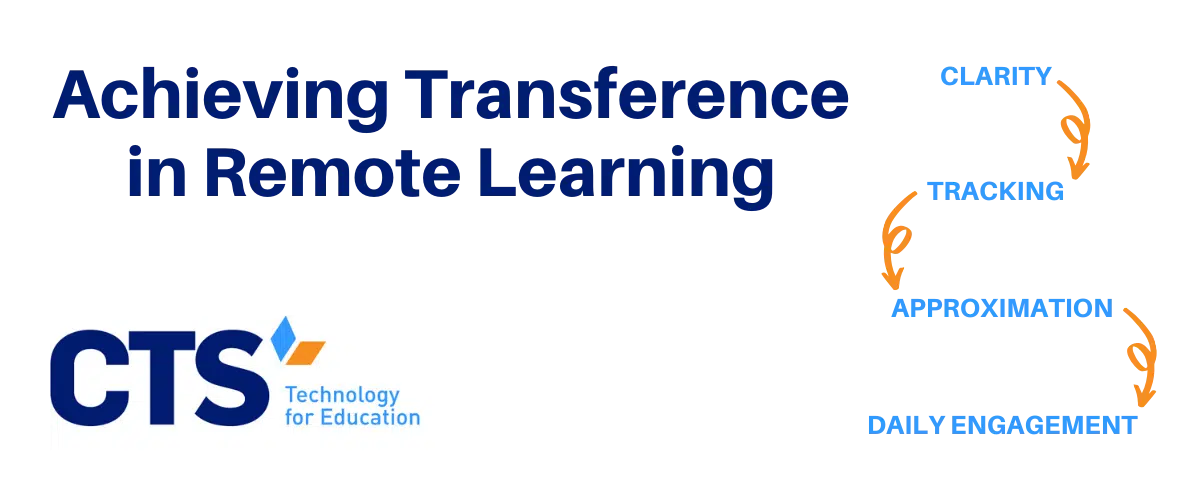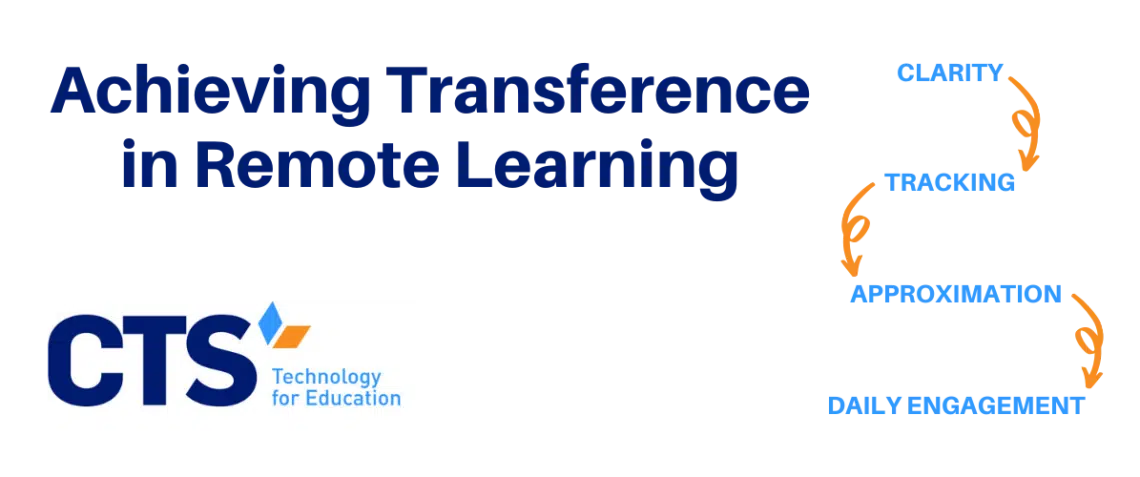Establish clear expectations for student engagement with online material.
In times of crisis, educators need access to innovative learning solutions that ensure students continuously engage instructional content. For many schools, online learning presents particular challenges. How will you hold students accountable for content mastery when you’re unable to meet with them in person? Will your school need to adjust its grading policy to accommodate a distance learning program? Do you have enough devices for each student and staff member? And most importantly, how can you measure what students have actually learned during the school closure period?
As a school administrator, your first step is to set clear, consistent expectations for how often you will require students to engage instructional content. Such engagement can take several forms. For example, you might require students to submit written work of a particular length once every two weeks, or upload responses to a problem set at the beginning and end of each mathematics unit. Regardless of your school’s specific requirements, accountability is key: even under a distance learning program, teachers should still hold students and families responsible for content mastery.
Establish a system to track students’ online learning time.
Some schools may even consider tracking students’ time spent on course content, whether on their school-issued or at-home device. No matter the internet browser, schools can work with their technology provider to install time-tracking plug-ins on each device. When a student begins working on a particular assignment or engaging with course content, he or she can simply activate the plug-in and begin tracking their time, down to the second.
Of course, a time-tracking system would require administrator oversight. Students may accidentally leave the plug-in active, despite finishing a particular assignment or leave the plug-in running on their device to simulate engagement. Rather than relying solely on students’ total engagement time, then administrators should instead review this data in conversation with overall student performance. If a student is struggling in a particular course, for example, teachers can review his or her time spent engaged with the course material and determine the appropriate next steps.
Use video conferencing tools to approximate your regular classroom environment.
Deploying a video conferencing tool can greatly enhance your remote instruction. In addition to simulating your regular classroom environment, video conferencing provides an additional layer of accountability. Teachers can easily determine which of their students are in attendance, as well as ask in-the-moment, intellectually challenging questions designed to assess content mastery.
Video conferencing also supports rapid troubleshooting in a remote learning environment. Rather than waiting on an email response or ticket resolution, teachers can quickly diagnose low-level issues with student technology, answer questions about a particular learning management system or, more simply, support students struggling with a particular concept.
Effective video conferencing platforms also facilitate collaboration among students. Rather than working on projects individually, students can work with their classmates on particular assignments, regardless of a school closure. Such projects not only support student learning but also reinforce social bonds between students strained by distance learning and help them hold one another accountable for academic engagement.
Plan to engage students on a daily basis, rather than according to their class schedules.
Whenever possible, teachers can further enhance student engagement by contacting students on a daily basis, in contrast to their traditional classroom schedules. A daily “do now” or trivia question related to course content can help sustain interest in the course content, as well as keep instructional content at the forefront of students’ daily schedules.
Even on days when class isn’t scheduled, teachers can leverage videoconferencing to hold one-on-one meetings with each student. These short, targeted meetings can support student learning on specific aspects of course content, as well as provide a forum for teachers to update students on their overall course progress. Face time between teachers and students can ultimately enhance students’ sense of accountability for course content. Even with school closed, students will know their teachers remain invested in their academic development.
At CTS, we work with schools to craft innovative remote learning solutions.
CTS currently works with more than 60 schools across the country, many of whom continue to navigate distance learning in the wake of COVID-19. At one of our partner schools in New York City, for example, we’ve supported the implementation of in-depth video lessons, videoconferencing, and learning management systems for more than 300 students, ensuring instruction continues remotely. Leaders at this site have leaned into the crisis, utilizing their existing distance learning tools to create robust online learning solutions. After conducting a thorough inventory of their devices and survey of students’ at-home internet access, the school quickly deployed hardware and began instruction almost immediately after the city’s school closure announcement.
Although distance learning presents significant challenges for school administrators, teachers, and families, we firmly believe executing a successful instructional program remotely is possible. We encourage administrators to review our Student and Family Resource Guide to identify learning solutions that make sense for their school community. Contact us today to learn how CTS can support the unique mission of your school.





